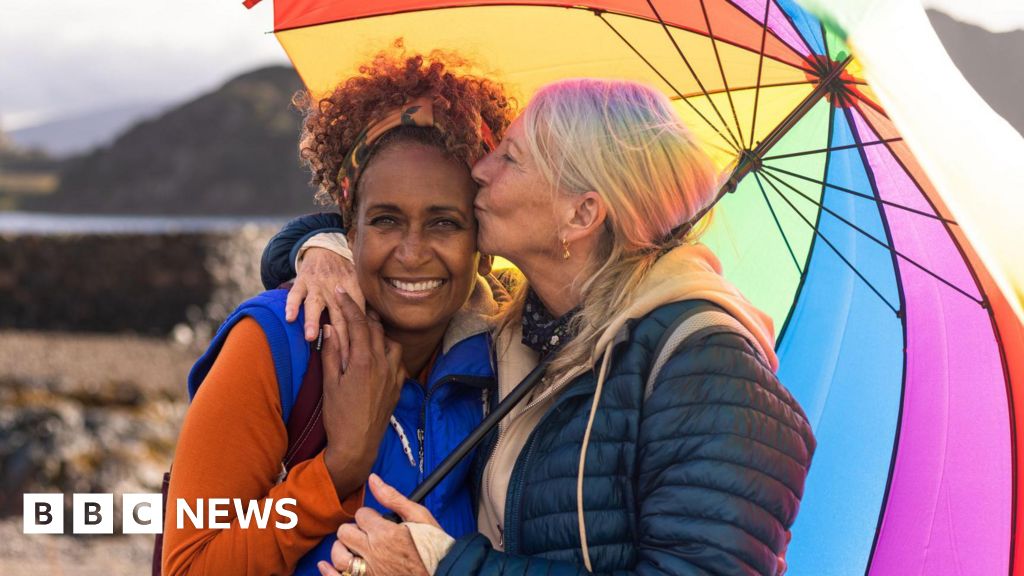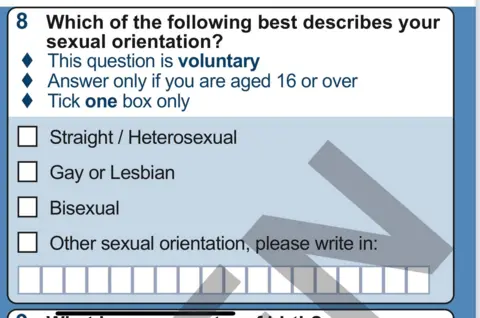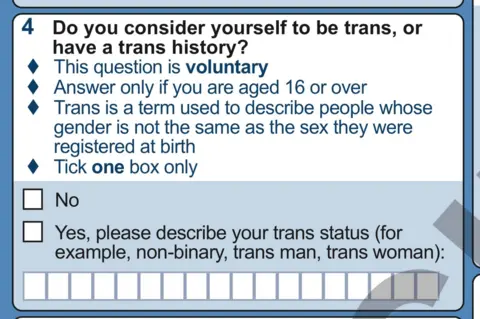Bussiness
Scotland’s LGBT community counted for the first time

By Susie Forrest, BBC Scotland News
 Getty Images
Getty ImagesThe first official headcount of Scotland’s LGBT community will be published later as part of data collected in the 2022 census.
The census was the first to ask Scots to voluntarily declare their sexuality and gender identity.
The previous census in 2011 decided not to ask respondents their sexuality after research suggested it was unlikely to provide an accurate picture.
The results of the census in England and Wales showed 748,000 (1.5%) of those aged 16 or over identify as gay or lesbian and 624,000 (1.3%) as bisexual.
It said 262,000 people (0.5%) said their gender identity was different from their sex registered at birth.
Around 3.6 million people (7.5%) did not answer the question on sexual orientation, while 2.9 million (6.0%) chose not to disclose their gender identity.
The census – which every household is legally required to complete – is usually filled out by one person on behalf of everyone in the household.
A decade ago, census officials thought some people might feel under pressure to choose between coming out to their family or hiding the truth.
There were also concerns about how to define sexuality, which can encompass some or all of a person’s behaviour, desires or identity, and might be understood differently by different people.
In 2011, officials felt Scotland wasn’t ready to be open about sexuality – and there was no public discussion about recording gender identity.
But by 2022, things had changed beyond recognition.
The rainbow language of the Lesbian, Gay, Bisexual, Transgender, Queer (LGBTQ) community has expanded to include people who don’t feel they fit into traditional categories of sexuality or gender.

So, for the first time, a “voluntary” question was posed, asking people which term best described their sexual orientation.
Respondents were also offered the option of a free-text box to describe their sexual orientation if it was not one of the three options available.
Another question asked for the first time was “Do you consider yourself to be trans, or have a trans history?”.
Again, respondents were given a free-text box to fill in however they wished.

The new questions came against a background of changing social attitudes.
At the turn of the century, just over 20 years ago, only about 29% of Scots believed same-sex relationships were “not wrong at all”. By 2015, this had risen to 59%.
A change in attitudes during the 2010s appears to have been reflected in at least some of Scotland’s institutions.
In 2016, then Scottish Labour leader Kezia Dugdale proclaimed Holyrood “the world’s gayest parliament” as she joined the ranks of openly LGBT party leaders, alongside Tory Ruth Davidson, the Scottish Greens’ Patrick Harvie and UKIP’s David Coburn.
For those questioning their gender, tolerance has also undoubtedly grown over recent years.
In 2022, a survey conducted for the BBC suggested a general sympathy towards trans people accompanied by uncertainty, particularly for older Scots, around how the law should treat them.
But the size and shape of the LGBT community has so far been the subject of guesswork.
That has been an obstacle to robust planning for services such as healthcare, and to understanding the impact of anti-discrimination laws.
So the new census data should provide a stronger basis for authorities to consider all of Scotland’s communities when designing equal access to the services they provide.








